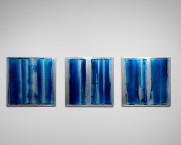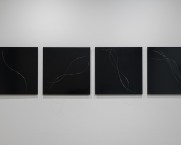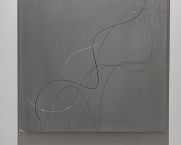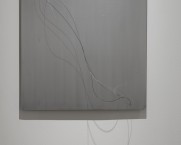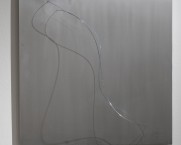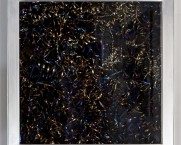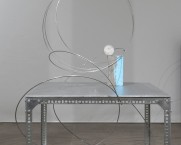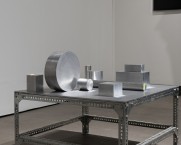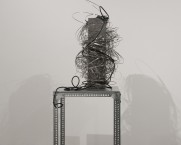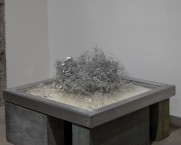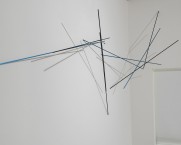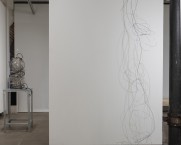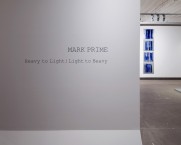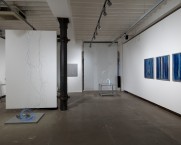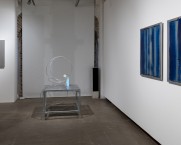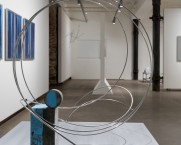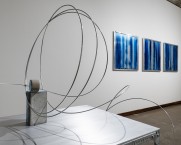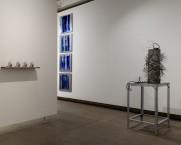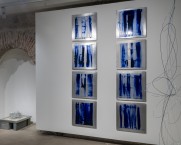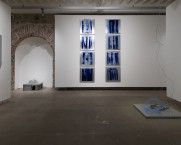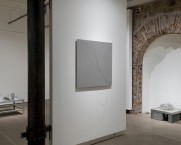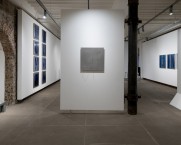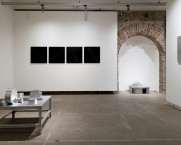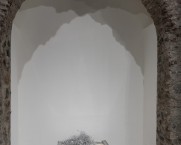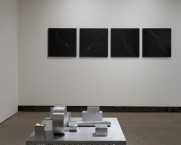C&L Shows
Heavy to Light | Light to Heavy
Mark Prime
2020

Overview
In 1855, at the Exposition Universelle in Paris, small bars of aluminium were showcased for the first time. The enormous cost of the metal’s extraction, and its alluring appearance, caused scientists to describe aluminium as clay transformed into silver. In these early days, aluminium was used to make jewellery and medals, with the aspiration that it could be adopted as an alternative to gold. A few years later, new scientific discoveries allowed a significant reduction in the cost of extraction, changing the course of aluminium’s future. The abundant malleable and ductile metal was found better suited for the fabrication of instruments and machine parts. Today, the appetite for this metal is so vast that new mines continue to be identified even in places where opposition to such extractive activity is fierce.
The bars, discs, and cubes of raw aluminium that appear in Mark Prime’s sculptures, evoke this initial moment of indeterminacy between the aesthetic and the industrial potential of aluminium. The rough striations on Prime’s pieces, which evidence recent contact with machines, and other markings denoting weight, make visible the metal’s present use. But, in their presence in this basic form in the gallery, the aluminium blocks also hint at a future that never came to pass. Rather than being a lament, this displaced display—of objects otherwise sold in the market for use in factories—makes us aware that the history of labour and its value is often defined by the forces of chance. Prime’s work, although largely in aluminium, is not necessarily concerned with elucidating the history of this or any other material, but in materialising the idea of chance itself with an attention to symmetry and pattern, and rhythm and variation.
The exhibition brings the environment of a factory into the gallery, through material and sound, exposing the disorder and noise that lies behind the production of precise objects. After a brief period of orientation, traces of this apparent disorder acquire harmony. The blocks of aluminium cohere into the familiar fragmentary abstraction of modernist sculpture. The soundscape takes on the tempo of the city outside, of the many moving bodies and things that heave in unison every now and then. Prime’s work invites reflection on the intersection of different kinds of labour, all concerned with the properties of a material, its surface and function, but meant for vastly different forms of reception. While the pedestal allows contemplation of the material’s properties from a distance and in stillness, the factory facilitates contact and transformation that is rapid and unceasing.
Prime’s interest in the working of machines, and their collective performance in a factory, is an outcome of having learnt to use metal fabrication equipment in his father’s workshop in Malvern, England, during his childhood in the 1970s and early ’80s. Although Prime’s engagement with the machines was restricted to the realm of play, learning how to operate them, helped develop a sensitivity to form and its modelling. Prime has refined these skills over the years as an artist, handcrafting delicate sculptures that appear to float outside gravity’s control, as seen in his first exhibition with this gallery. In this presentation, the originary site of Prime’s preliminary education in sculpting is heard through the soundscape recorded and mixed by his collaborator, recording engineer and drummer Matthew Devenish. While the samples included in the track were made in Prime’s father’s factory in the early 1990s before it was shut down for another art project, here the soundscape resonates as both a reminder of that world that no longer exists and an echo of the immediate location of the exhibition’s staging.
Across many works in the gallery, we return to the metaphor of fluidity between states, and the suggestion of its oddly rhythmic workings, as in the wall-mounted sculptures in which metal wire and nylon fibre twists and flows in and out of the frame, catching light and giving the impression of movement. It is as if through a temporal glitch, a score has been frozen and we can see the sound, walk in front of it, and touch its shimmering and shadowy notes. Prime’s own interest in music comes from having taught himself to play the guitar and the drums, and then having worked as a professional musician, before devoting all his time to visual art. This biographical reference is not necessary to the work’s appreciation but it offers another perspective to Prime’s facility with rhythm, dissonance, and balance. Indeed, this exhibition brings together three elements that Prime has consistently worked with—light, metal and music.
Unlike in Prime’s last exhibition where the sculptures seemed to exist in an ethereal sphere, the commonly available plinths used in this assembly, return us to the orbit of the actual. On the sculptures themselves, marks are visible, including those that came to be made before the material was to be placed in a gallery. Prime retains these apparent imperfections, which add a layer of history to the work, and indicate its now lost future as items for functional use. In another life, the material used in these sculptures would have been divided purposefully and transformed into pieces that allow things to function, eventually anonymously dispersed and diffused in our lives. The threshold of these possibilities is memorialised in paintings with blue engineering ink on aluminium plates. The ink is usually employed in cutting and polishing processes to check unevenness of surface, with variations in tint indicating raised areas or depressions. Prime smears the surface of the seemingly flat aluminium plates with the radiant blue dye, arresting the peculiarities of texture and the gesture of application, and its varying absorption and reflection of light. The works capture the beauty of a fleeting moment within the grittiness of production, one that is transitory and only meant a stage in the desire for perfection.
Prime is able to reconfigure our encounters with otherwise familiar materials because his encounters with them have been deep and engaging. Such a sustained study allows the artist to expand our vision as when he presents scrap metal shavings within a framed box as a representation of the universe. The iridescence of the curled stripes recalls the nighttime sky, or light pulling in and out of focus during a cosmic event. That the rudimentary and the mundane can invoke the sublime, however briefly, and especially in its briefness, is one of the most compelling sensations aroused in Prime’s exhibition, taking us from the light to the heavy and the heavy to the light.
~ Zeenat Nagree

